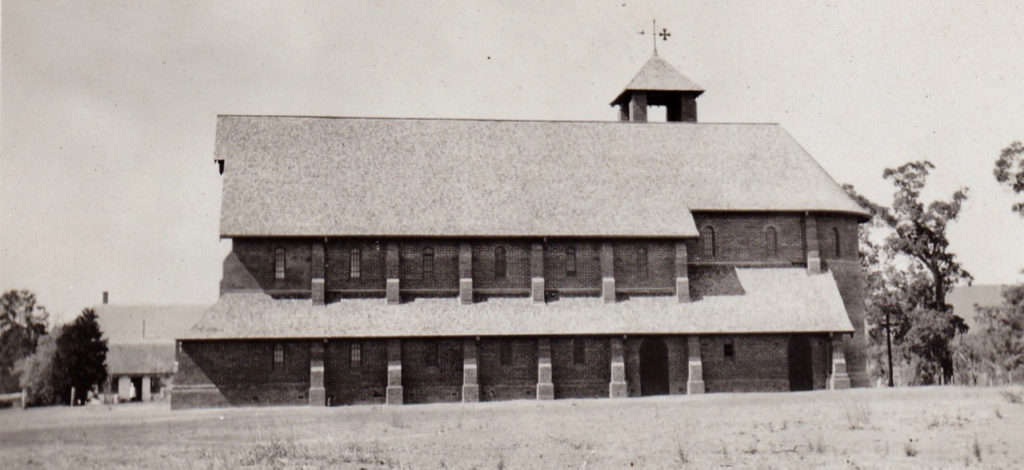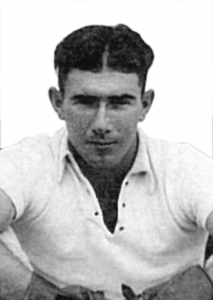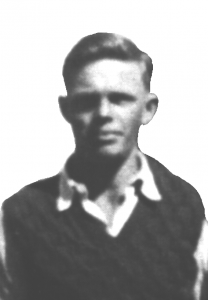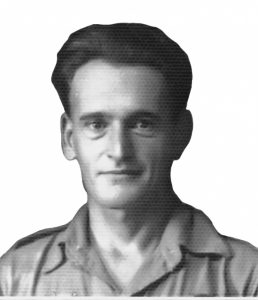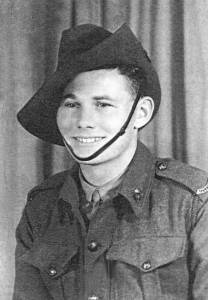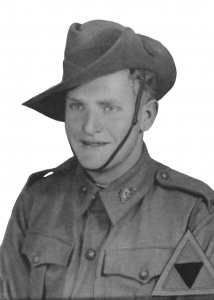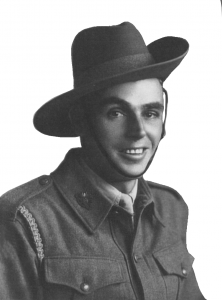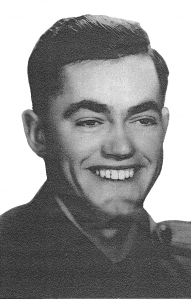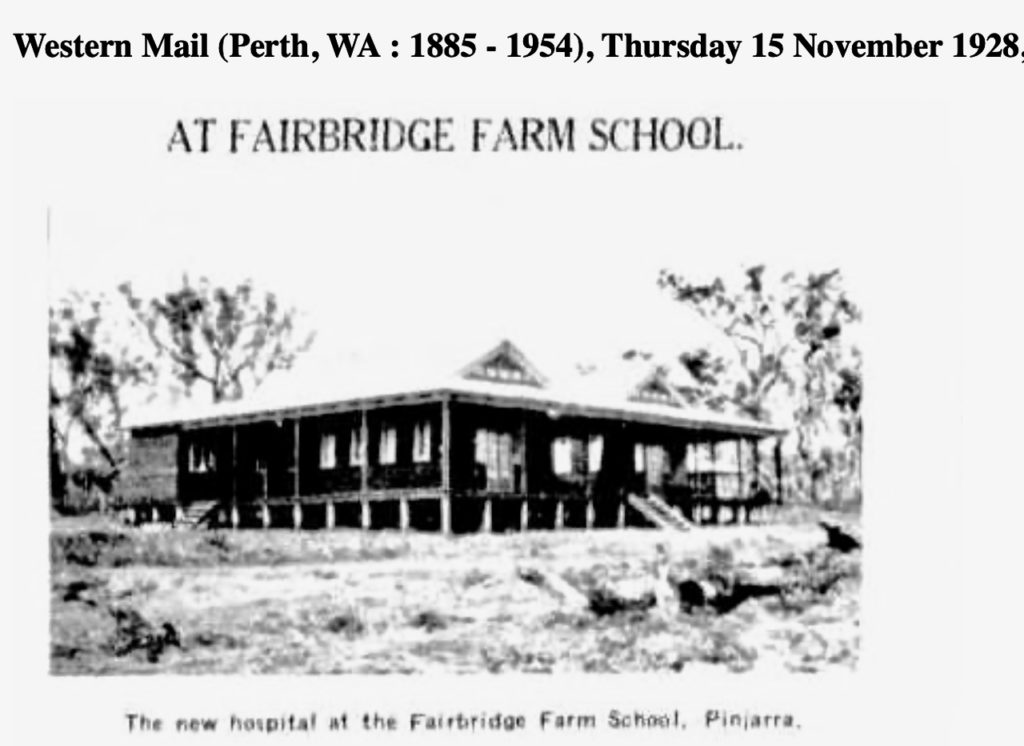Kingsley Fairbridge’s project Pinjarra Fairbridge Farm School commenced about 1910. Until WWI about 30 boys had passed through. Following the end of WWI and in 1921 parties of boys and girls once again began arriving at Fairbridge. From Fremantle the first group of 15 boys and girls took the train to Pinjarra where they were met and transported to Fairbridge. This group was initially accommodated at another less permanent location on the farm until two cottages were completed at the current site. Shakespeare for girls and Warren Hastings for the boys. Kingsley Fairbridge was himself living in a tent as his home during the early stages of construction.
Over the years further houses, workshops, school, dairy shed, machinery shed, etc. were constructed.
Sadly Kingsley Fairbridge died in 1924, however his ideals were continued under the guidance of Fairbridge Society up to and including WW2. The formula changed after WW2 and it is believed Fairbridge’s ideals were no longer relevant.
The history of Fairbridge Farm Schools, Kingsley Fairbridge and management from England and Australia is far more complex than we have written here.
(Please be aware ‘Fairbridge Farm School’ Molong NSW which operated between 1938 to 1974 has absolutely no connection to Fairbridge Farm School, Pinjarra, and further no connection to Kingsley Fairbridge. Moolong was in fact established and run by NSW Government.)
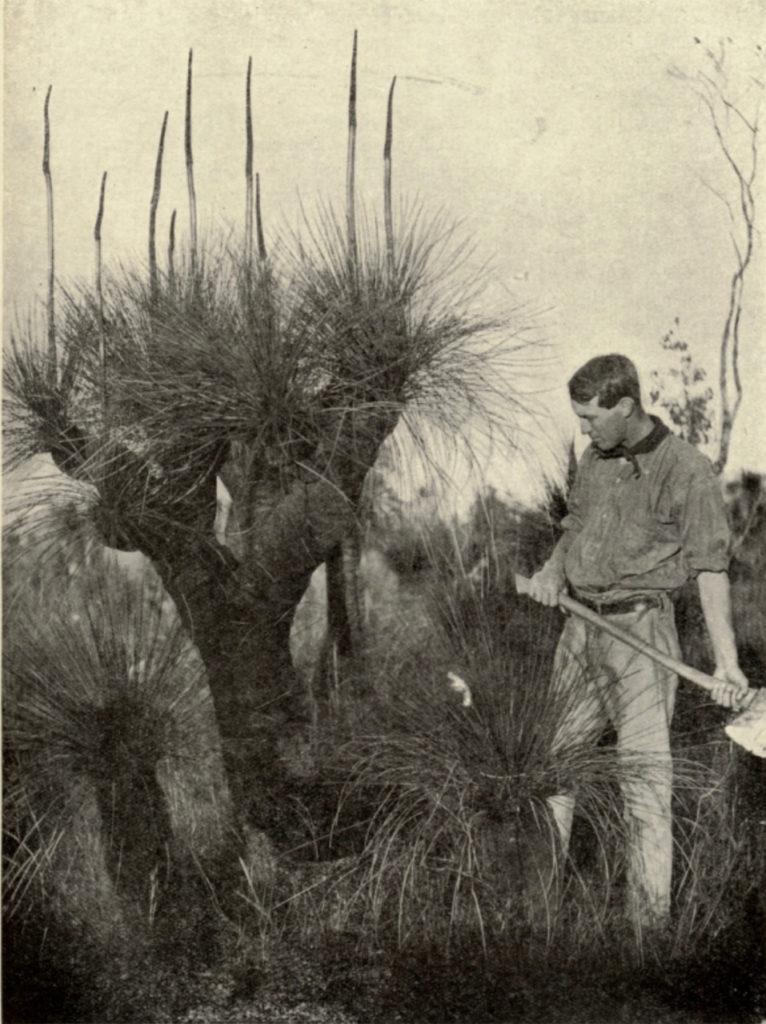
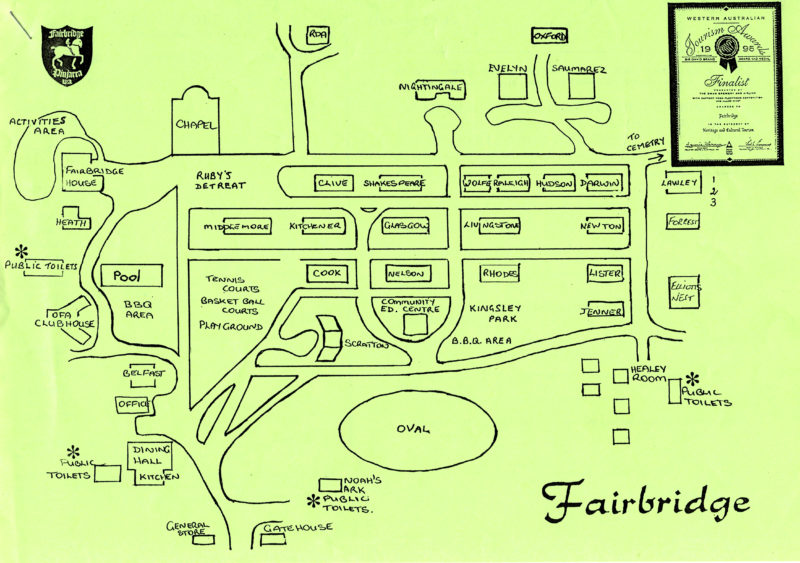
The children were always referred to by the surnames, never their christian names.
At most times the School housed 340 students.
There were instances when children who were considered ‘unsuitable’ they were returned to England. (unsuitable could be deep seated health or behavioural issues)
There were 7 girls’ cottages housing 100 girls and 16 boys’ cottages housing 234 boys. The girls and boys were not allowed to mix!
Students were Wards of the State until they turned 21 years. This means they were not officially able to leave their place of work. If they were unhappy in their job/location they were required to write to Fairbridge to ask to be relocated – it is believed changes rarely occurred.
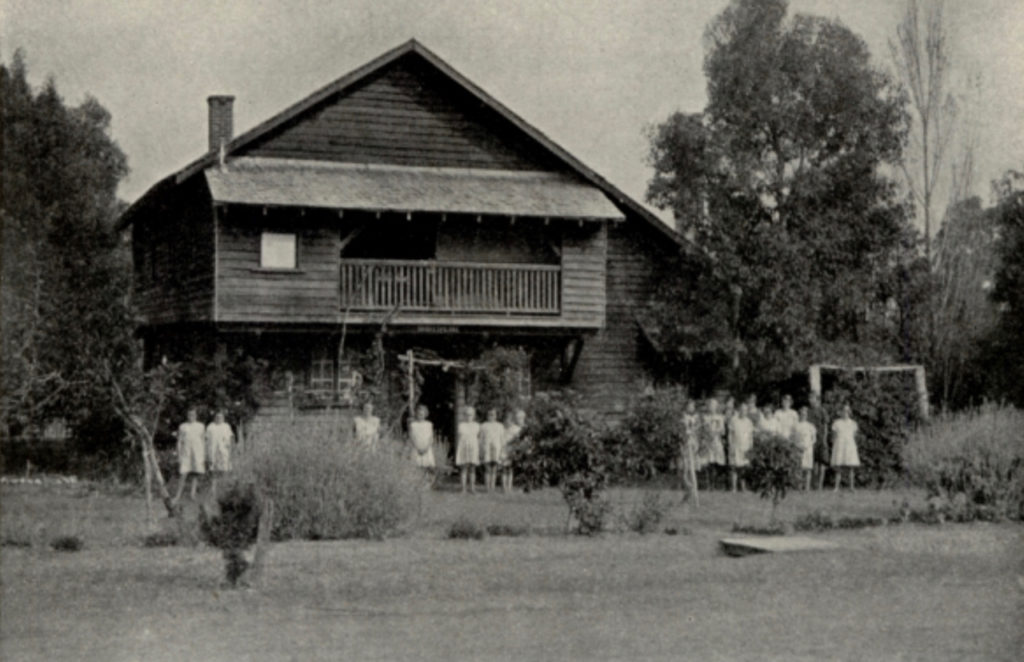
Above: Shakespeare Cottage
Research shows 70% of all Old Fairbridgians enlisted into the WWII Australian Forces, which is a remarkable number. One wonders whether they were fighting for Australia or England!
In reality the reason so many former students enlisted was for the following reasons:
To escape their current working positions and life which really held very few options. They were contracted through Fairbridge and were Wards of the State until they were 21 years old. A very large percentage of the Fairbridge workforce were seen as hardworking (due to their disciplined early life) and they were inexpensive ti their employees – many of whom were struggling during the Depression of the 20s and 30s. These were difficult years before WW2.
Enlisting offered the opportunity for adventure and to see the World! For some it was the means of a dream to return to England. Perhaps for most it was a chance to get away from their places of employment.
1500 students students passed through Fairbridge up until WW2. 620 young women and men enlisted with the Australian Forces – the largest contingent in Western Australia. 500 returned home to Western Australia.
Those who enlisted with the AIF mostly joined the 2/28th or 2/4th MG Battalion.
Once you turned 14-15 years of age children were found employment within the state. Girls to domestic jobs in rural areas and the boys to assist with farm work, i.e. agricultural labourers. Fairbridge Farm School Students remained officially Wards of the State of Western Australia until they turned 21 years old. As a student of Fairbridge there was no question of furthering one’s education – there were some who were talented students and could only dream of what might be.
Many were fortunate to be placed with kind and generous employers and for others, it was anything but ideal. They encountered isolation in remote locations, particularly in the north-west and wheat belt regions, inadequate accommodation and discrimination. Communication with Fairbridge and friends was by letter only. The cost of telephone calls was prohibitive in rural regions. For those isolated it proved very difficult as they were used the institutional Fairbridge life of many children along staff members and teachers. They often worked alone, were unable to visit the local town, did not know where their former school friends were and would spend their day off at the property. Some never had or rarely had a free day.
There have been many humorous stories over the decades. This one concerns Reg Pascall, a most gentle and delightful man. He was employed on a farm where he was regarded as nothing more than a ‘slave’. When the farmer and family drove away for the day Reg recognised an opportunity to take a proper bath in warm water! He filled the bathtub to capacity with nice warm water. Naturally he didn’t think to clean the evidence and tell -tale deep-water bath stains. Reg was soon sent on his way! (and of course he did not have running water nor a bath for his own use!)
Fairbridge representatives would drive around the countryside and check on their wards, however it could be a long time between visits. Several reports printed in the “Fairbridgian” Magazine barely mention the names of the Fairbridge kids they were visiting, only writing of ‘their’ interlude with the property owners, describing morning or afternoon tea, conversations, how many miles driven, how many towns they visited and how many children!
Did they ever talk alone with the children? Did they know what conditions these teenagers were dropped into? We don’t believe so.
Reports from these visits were compiled on each child, in particular the quality of accommodation, etc. These employment records, school reports and records for every Fairbridge kid was maintained and unless collected by families, are today kept at the Battye Library.
Noel Matthews’ (aka ‘Cowboy’) first job was on a farm south of Fairbridge. His accommodation was in the shed that housed the stallion. He was absolutely terrified as this horse kicked and lashed out at the walls every night as he tried to sleep in the loft above.
For many prospective farmers it was an opportunity to have cheap labour. The girls were employed in the farmhouses and boys outside. Their only skills and knowledge came from Fairbridge, this was all they had ever known.
At Fairbridge these children were fortunate to eat good food – the farm grew vegetables, they produced their own eggs, milk and meat. Their bakery baked fresh bread every day. In many aspects the children were tough – they never owned a pair of shoes since they day of their arrival in Pinjarra. They were rostered on chores everyday either milking cows, in the bakery or workshops either carpentry or machinery. They were also required to maintain their cottage garden and their cottage.
For this reason it would be fair to say most Fairbridge children, in particular boys were physically well developed. They had the privilege of eating well (with meat) but also exercised consistently in the form of farm-work, gardening, and sport – possibly more so than many young Australians living through the Depression with unemployment and poverty at that time. And most importantly they were well disciplined. They were also wards of the state until the age of 21 years and were supposedly bound to Fairbridge and their contracts.
For Fairbridge kids, from wherever they were and whenever they could, would make their way ‘home’ . The construction of the Old Fairbidgians Club House in 1933 meant they were able to have full board whenever they wished, i.e. annual holidays. This was their ‘home’ – they could meet up with other ‘kids’, catch up with the many employed staff and be where they knew best. They could also swim in the pool, play tennis, etc. There was a record book for names and addresses of Fairbridgians who stayed throughout the year, with news of their lives and their locations. (the only way former Fairbridge students tracked and resumed friendships)
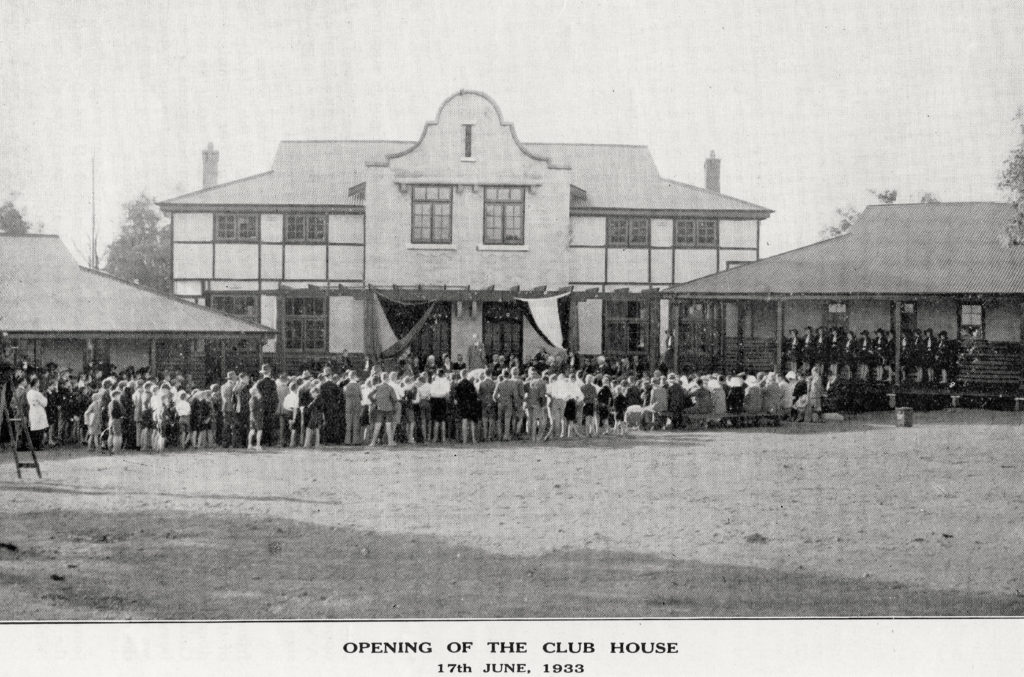
Other than two week annual holidays, Fairbridge kids would try for a Christmas lunch or other festivities to be at Pinjarra – anything to return to what they only knew as ‘their home’ Another favourite was the Mandurah Holiday Camp which ran in January. The Old Fairbridgians Assoc. organised a camp for former students to use (for a fee). This was the highlight of student years – when the school set off for Mandurah. Swimming, fishing and lots of fun.
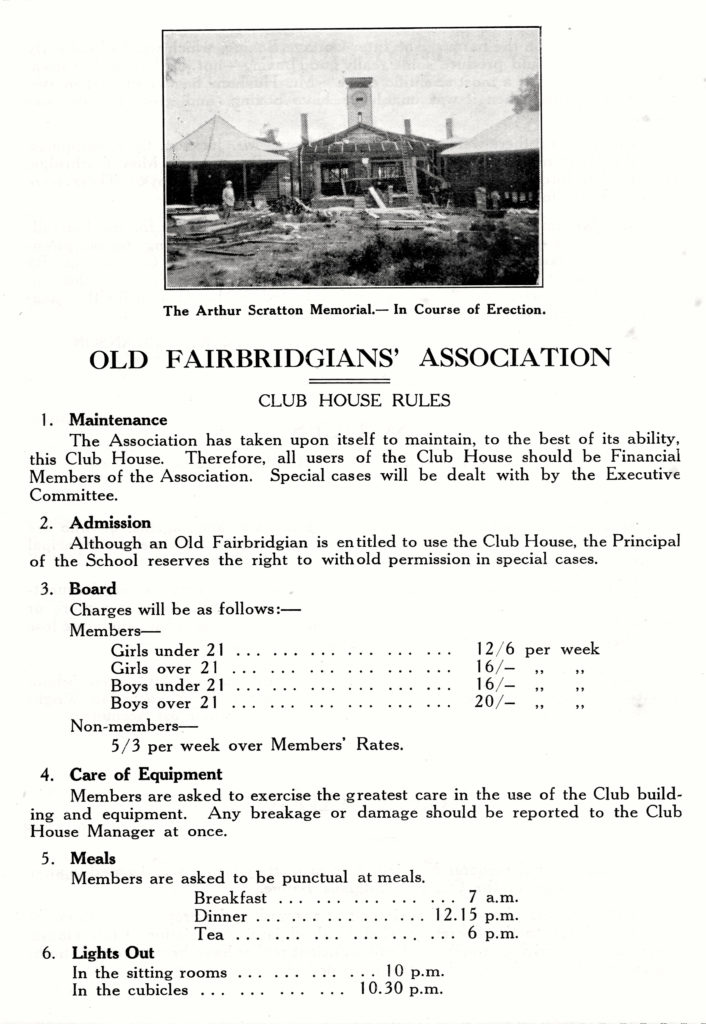
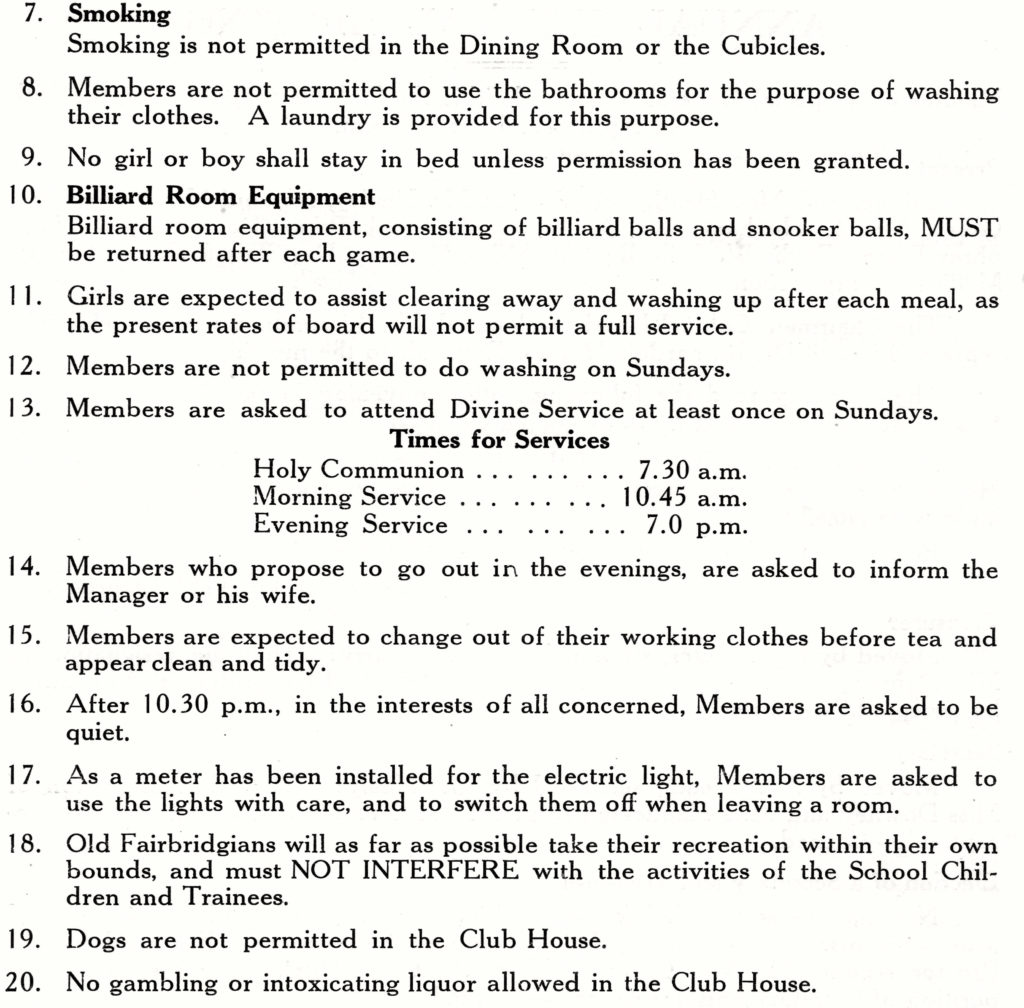
OLD FAIRBRIDGIANS’ ASSOCIATON
The Club House was opened June 1933 financed by donations from supporters in England. 365 pounds raised towards the erection of a club house by O.F.A. was used to furnish the building.
Prior to 1933 it was difficult to accommodate Old Fairbridgians returning to school either for holidays, illness or when changing employment. Girls were camped in rows on the Rectory verandah and at one time the boys had to sleep in a disused dairy.
Founded in 1929 the OFA had a membership of 120 with an annual subscription of 10/6. In its first year 350 members visited and in 1934 there were 400. During those years a weekly average of 20 girls and young men were staying at the club house.
Girls paid 12/6, boys 16/- per week and non-members paid a further 5/3 more. Those who were not earning wages could visit the club, provided they work for the school in lieu of their board. Girls over 21 years paid 16/- and boys one pound weekly.
The Club House was ‘home’ to Old Fairbridgians as was their cottage in school days.
For many prospective farmers it was an opportunity to have cheap labour. The girls were employed in the farmhouses and boys outside.
At Fairbridge these children were fortunate to eat good food – the farm grew vegetables and produced their own eggs, milk and meat. Their bakery produced fresh bread every day. In many aspects they were tough – had never worn a pair of shoes since they day of their arrival in Pinjarra. They were rostered on chores everyday either milking cows, in the bakery or workshops either carpentry or machinery. They were also required to maintain their cottage garden.
For this reason it would be fair to say most Fairbridge children, in particular boys were physically well developed. They ate well (perhaps not hugely) with home grown vegetables and farm meat also exercised consistently in the form of farm-work, gardening, and sport – possibly more so than many young Australians living through the Depression with unemployment and poverty at that time.
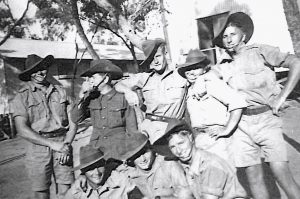
Above: Believed to be 8 Fairbridge ‘boys’.
‘Cowboy’ Matthews standing 3rd from with arm around shoulder of Hurst.
L-R Standing: Harry Lucas, possibly Reg Tooze or King, Cowboy Matthews, Pat Hurst, possibly Ron Burchell, Front L-R unknown, unknown, Tom Pilmoor. Others could be Pascall, Davies.
600 former Fairbridge Farm students enlisted in WW2.
21 OLD FAIRBRIDGIANS JOINED 2/4TH MACHINE GUN BTN
-
THE FOLLOWING 11 DID NOT RETURN
-
WX14022 BURCHELL, Ronald b. 26 May 1920 Devon

-
Ron enlisted AIF 11 June 1941, later joined 2/4th’s Reinforcements ‘E ‘Coy. He was promoted to Corporal on 7 Feb 1942. KIA during Japanese ambush at South-west Bukit Timah, Singapore aged 22 years on 11.2.1942 when half the Coy lost their lives. Read further about Burchell brothers.
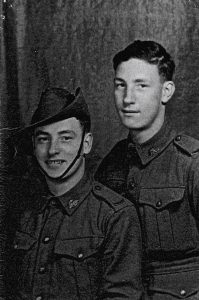
WX8397 CHIPPERFIELD, Robert William b. 5 May 1916, London, England.
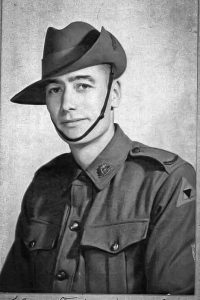 Bob arrived at Fairbridge aged 6 years on ‘Themistocles’ 9/8/1921 with his older brother Charles Edward aged 11 years.
Bob arrived at Fairbridge aged 6 years on ‘Themistocles’ 9/8/1921 with his older brother Charles Edward aged 11 years.
Bob was housed in Wolfe and Charles in Darwin (one would have thought brothers could be housed together!) Bob Chipperfield’s parents died in 1922.
Bob was an early enlister – 7 Oct 1940, later joining 2/4th’s ‘A’ Coy 5 Platoon. Bob was a caring and gentle giant of a man.
Bob was the ‘Tallest man in 2/4th’. He was shell-shocked at Ulu Pandan. He died of illness on the First March, Sandakan to Ranau Track, Borneo of Cardiac Beri-beri 11/2/1945 (28 years)
Please read further about the tragedy of Sandakan
WX20086 DAVIES, Gustav (Gus)

was born 22 Oct 1921, Wales. arrived Fremantle on ‘Balranald ‘aged 11 years on 14/11/1932. On the same 1932 journey was Ronald Burchell WX14023 and Ron’s brother.
Gus was housed at Kitchener at Fairbridge.
He enlisted AIF 1 Oct 1941 and later joined reinforcements ‘E’ Coy. KIA Buona Vista, Singapore, during the last day of fighting on 15/2/1942 he was only 20 years old.
Gus’s parents Charles A Davies and Agnes Mabel Rapson married March 1920 Pontypool, Monmouthshire, Wales. Gus had an older brother Charles Allan born 1920 and younger sister Ursula who was born 1924.
His father Charles Davies died Sep 1931 Pontypool, Monmouthshire. His mother Agnes died in NSW, Australia in 1974. Agnes had gone to Australia with her son Charles who died in 1991. It is not known if Agnes kept in contact with Gus.
WX9131 GOODWIN, Reuben

Born 14 Aug 1916 Essex, England.
Rueben was from Barnardos homes, England and arrived Australia on ‘Ballarat’ 1928 aged 11 years. He was housed in Forrest.
(We have traced a brother Arthur and sister Beatrice).
Rueben was working for Bailey family, Konnogorring (near Goomalling) as a farm labourer when he enlisted. (another local was Leonard ‘King’ Thistlewaite who was known to Pard Riches of 2/4th)
Enlisted AIF 30 Oct 1940 later joined ‘B’ Coy 9 Platoon. Selected in Singapore with ‘F’ Force to work on the Burma-Thai Railway. He was evacuated sick to Tambaya Hospital Camp in Burma where he died of beri beri and dysentery 6/11/1943 . (27 years). 1700 F Force men were initially evacuated to Tambaya. Of these 750 died. Tambaya had no medical supplies or equipment.
Please read further about ‘F’ Force Thailand
WX17351 HURST, Patrick George (Pat)
Pat arrived aged 12 years
Arrived Australia on ‘Baradine’ Christmas day, December 1934. Although not recorded on his enlistment papers, and perhaps he did not know, Hurst’s parents were George Hurst (Snr) & Edith M. Millingsley.
Hurst enlisted 22 Oct 1941 at Claremont, initially recorded the Fairbridge Headmaster as his next of kin, later changing to his then wife Patricia May (Martain) whom he married in 1941.
His widow Patricia remarried in 1947.
He joined reinforcements for 2/4th. With ‘E’ Coy he was KIA South-west Bukit Timah Japanese ambush, Singapore 11/2/1942 aged 20 years.
WX16236 KING, Alfred Victor (aka Albert John)
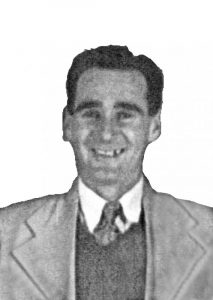 Believed to be born at late as 1924, King recorded his birth as 21 Feb 1922. Along with his name variations this was to disguise the fact he enlisted underage. As a Fairbridge Farm kid he was a ward of the state until 21.
Believed to be born at late as 1924, King recorded his birth as 21 Feb 1922. Along with his name variations this was to disguise the fact he enlisted underage. As a Fairbridge Farm kid he was a ward of the state until 21.
King arrived on ‘Oronsay’ departing England July 1932 aged 8 years. Also on board was 13 year old ‘Ted’ Edward Jonathon Leadbitter WX8425.
He enlisted AIF 27 Aug 1941 later joining the reinforcements for 2/4th, with ‘E’ Coy. King survived the battle for Singapore. Selected in Singapore to work on Burma-Thai railway with ‘D’ Force S Battalion in Thailand. Sent to Japan with ‘Rashin Maru’ worked Yamane, Niihama. Recovered from Japan at end of war (other ‘D’ Force S Battalion Fairbrige boys were Westlake, Pascall, Matthews) The last two were also with ‘Rashin Maru’ Party to Japan.)
Rejoined AIF and was KIA 8/11/1950 Korea aged 26 years. (after 42 days in Korea)
WX4949 KINGSWELL Ronald (Ron) James, Sgt
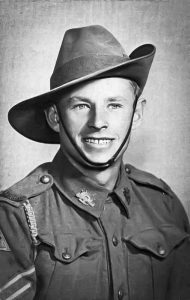
Ronald James Kingswell arrived in Australia 14/2/1928 on ‘Bendigo’ aged 12 years. He was housed at Wolfe Cottage. He enlisted AIF 23 Jul 1940, later joining ‘C’ Coy. He and Gibbons were Sergeants for No. 12 Platoon.
Died 25/3/1942 appendicitis Allied Hospital Bandoeng, Java aged 25 years. Kingswell never reached Singapore with the 2/4th – instead he arrived with about 90 machine gunners at Java, where they joined the Allied Forces to fight the Japanese. They were taken POWs in early March 1942.
Please read about 90 men from 2/4th who were AWOL at Fremantle.
Ron was engaged to be married, the reason he jumped ship!
As we later discovered Ron has a half brother and quite an extended family, of which he knew nothing.
WX8425 LEADBITTER Edward Jonathan (Ted)
Born 5 Dec 1918 London to George & Maud Leadbitter.
His father had died in the Battle of Jutland and his mother had passed away when he was 11 years old.
Ted arrived in Australia on 23/8/1932 on ‘Oronsay’ aged 14 years as did another 2/4th WX16236 Albert John King aged 8 years who was KIA Korea 1950. He enlisted AIF 18 Oct 1940 and later joined 2/4th’s ‘D’ Coy 15 Platoon under Commanding Officer Lt. Meiklejohn.
Please read about ‘D’ Company, 15 Platoon.
Ted had married prior to departing.
Selected in Singapore with ‘D’ Force V Battalion to work on Burma-Thai Railway. Died cholera following a brutal and extended beating at Kuii Camp, Thailand from a spiteful guard called ‘Blackcat’ on 10/10/1943 aged 24 years.
Please read further about ‘D’ Force V Battalion
WX7634 OSBORNE Sydney Albert (SYD)
Born 23 May 1919 London, England. He arrived 11/2/1924 aged about 5 years. Osborne was housed at Jenner Cottage.
Sydney Albert Osborne married in 1937 to Fairbridge girl Irene Daphne Randall who arrived in WA November 1929 and was housed in Wolfe cottage. At 14 Irene would have been sent to work as a domestic in rural WA.

Syd Osborne enlisted AIF 10 Aug 1940 later joining 2/4th MGB’s ‘D’ Company No. 14 Platoon as a driver with Commanding Officer Lt .Tom Tompkins. Other 2/4th ‘boys’ in this platoon included Percy Westlake. Although tall, Syd was not as tall as Bob Chipperfield.
Osborne was wounded in action at Ulu Pandan. Admitted to 2/13th Australian General Hospital on 16.2.1942 with shrapnel wounds to his back, shoulder and left buttock. Discharged to unit on 7.3.1942. There were many 2/4th KIA or wounded at Ulu Pandan.
Selected from Singapore to Borneo with ‘B’ Force Borneo with Bob Chipperfield, he never left Sandakan Camp and died malaria 26/6/1945 aged 31 years. Syd was married with two young sons. One son Brian, is today (April 2021) 80 years old.
Irene Osborne remarried. Thereafter at the request of her new husband, she and the boys were never allowed to talk of Syd again and his photos put away.
Please read about the Sandakan Tragedy
WX7617 SCADDAN Harry Wright
was born 20 Aug 1914 Ashington, England to Harry (Snr)and Winnie Scaddan.
Harry Scaddan arrived in Australia 21/3/1926 on ‘Berrima’ aged 12 years. He was housed in Wolfe. His father had died and his mother was unable to take care of both Harry and his sister however they corresponded.
His sister pursued her interests and talent in ballet of which Harry was most proud. His future plans included returning to England to see his mother and sister.
Scaddan was sent to Boyanup to work with Bill Smith then left to work at Argyle Mill. He later went to work for T.E. Reilly and became best friends with son Joe Reilly. Harry was a talented sportsman – he played cricket, hockey and tennis.
Harry was a noted sports boy at Fairbridge. His name is recorded in athletic events with John Ramsbottom (also 2/4th). Harry also played drums!
He enlisted AIF 10 Aug 1940 and later joined 2/4th’s HQ Coy. Selected in Singapore with ‘A’ Force Burma Green Force No. 3 Battalion to work on Burma end of Burma-Thai Railway. Evacuated sick from Burma to Tamarkan Hospital Camp, Thailand where he died of malaria 22/4/1944 aged 29 years. * (Claude Knott enlisted same day). Please read about A Force Burma Green Force No. 3 Btn.
WX16323 TOOZE Reginald Gerald
B. 24 Sep 1920 Somerset, England to May Tooze.
Reg arrived Australia 14/5/1931 aged 11 years. He arrived on same ship as ‘Cowboy’ Matthews, the ‘Largs Bay’. Both were housed in Nelson Cottage.
He enlisted AIF 3 Sep 1941 later joined 2/4th reinforcements, ‘E’ Coy’ as a Batman/runner. KIA 11/2/1942 South-west Bukit Timah during the Japanese Ambush where nearly half ‘E’ Coy died. Reg was 21 years old. Reg had been working and residing at Yarloop when he enlisted.
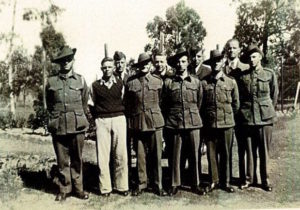
* Tooze & Tanner enlisted same day.
Right: believed to be taken Fairbridge. Tooze in civilian clothes – Reg did not enlist until 3 Sep 1941 – this photo taken prior to that date.
During Mar 2020, a member of Reg’s extended family in England made contact with 2/4th. Geoffrey Tooze is the son of Reg’s younger brother George. When George died, his children discovered they had an Uncle who had lived in Australia and was KIA Singapore 1945 – they previously had no knowledge of Reg’s existence.
Reg Tooze’s name is inscribed on WW2 Memorial at Yarloop.
It is believed Reg was in the Fairbridge Choir.
He was working on a farm in 1935 at ‘Byeen’, Wattening via Toodyay
In 1936 Reg was working at Pindawa Pastoral Company, Canna (small town located between Morawa and Mullewa) and was working at Yarloop prior to his enlistment.
When Reg Tooze was about 14 years old he was with a party of boys sawing wood with a group of boys. They had been on this task for about 6 weeks splitting sheoak, jarrah and banksia. The large and bulky steam combustion engine which weighed over a ton and could not be moved or budged if tripped over or lent on, was used to drive a 10 foot cross-cut saw to segment larger tree trunks into more easily handled lengths.
The piece of wood being sawed was jarrah with many knots in the grain so the crosscut saw had difficulty cutting through. Without warning the saw jerked sharply to a stop and the leather-driving belt thrashed out violently in all directions striking Reg Tooze. Although several boys suffered very slight wounds, Reg lay seriously injured on the ground. Bill McCormack immediately recognized Tooze’s injuries were such that he should not be transported back to Fairbridge in the Reo truck as the ride on corrugated track as the ride would be far too rough.
He ordered the boys to put together 2 strong sapling sticks and with bags from the truck made up a bush stretcher for 4 boys to carry the injured Tooze. There were 5 boys and Bill McCormack. They took turns carrying their patient, stopping at 5-minute intervals and one driving the Reo truck behind the party.
They had travelled a mile when it became obvious the boys were no longer able to carry Tooze. They all had severely blistered hands from the moisture of the green saplings mixed with perspiration and grimey hands. They were physically exhausted. They were also in a state of shock.
By this time Tooze was conscious and able to speak a few words. He managed to tell them he was cold, stiff and couldn’t feel his legs. With this news Bill McCormack ran to the Reo truck telling the boys not to leave under any circumstances. Reg’s mate Gordon Bowles sat beside him waving his hands to keep the flies away as Cormack drove away towards the village.
Within half an hour Bill McCormack was back in the Reo with the Fairbridge Nurse- dressed in her white stockings, white uniform and white cap. She hurriedly made her way to Reg; felt his forehead, raised his eyebrow to peer into his eyes and after shaking her thermometer proceeded to take his temperature. She did not attempt to straighten his doubled up knees.
After conferring with Bill McCormack the Red Cross Warden announced Reg was to be carefully lifted onto the back of truck and the boys to pack in tight around the stretcher so much so that it wouldn’t move or bounce about.
It was late when the truck arrived back at the village, in fact almost dark. While Reg was taken to Hospital at Pinjarra those with surface injuries were nursed in their beds and after a few days placed on light duties only.
It was several weeks later before Reg Tooze was found by the boys sitting on the steps of Stratton House – home to the senior boys. He lifted his shirt to show the deep welts on his abdomen some of which were still inflamed. Reg was put on light duties in the vegetable garden with Bowles. The two had previously lived in different houses, but opposite each other. Bowles was in ‘Glasgow’ right opposite Nelson where Tooze was. And they had both been in the church choir.
Both boys went out to their respective farm labouring jobs at 15 years of age. They never met again.
Reg had never voted or married. Fairbridge was all he really knew to be his family.
Bowles enlisted with 2/48th. and survived.
Please read about WX14836 John (Jack) Kenneth Ramsbottom (later Lane) form Fairbridge boy and author.
Below: Nightingale – Hospital constructed 1930s with two four bed wards – one each for girls and one for the boys. There was a Nursing Sisters accommodation at rear.
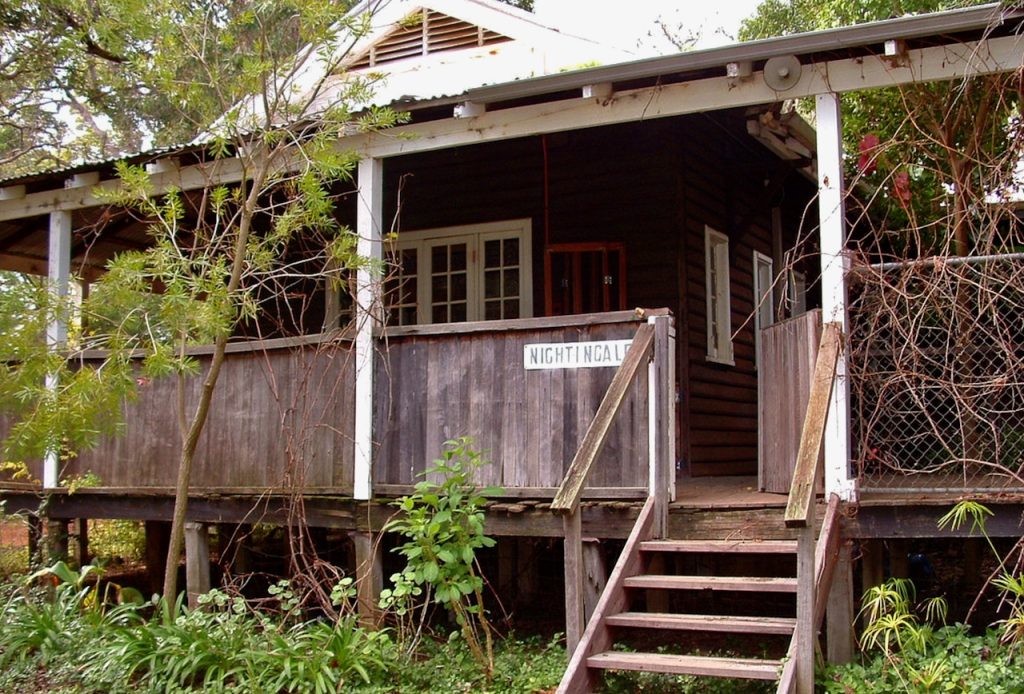
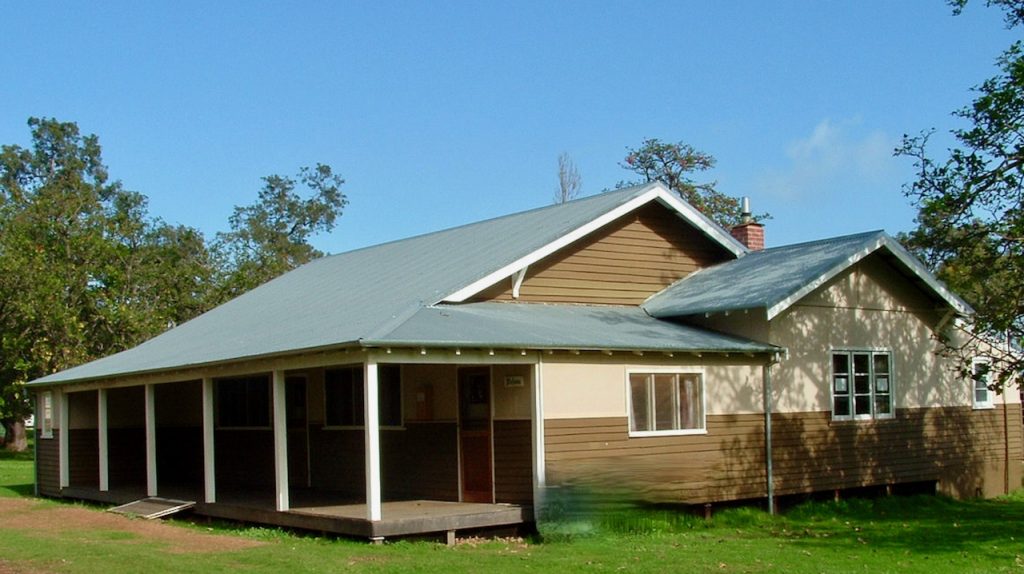 Above: Nelson Cottage
Above: Nelson Cottage


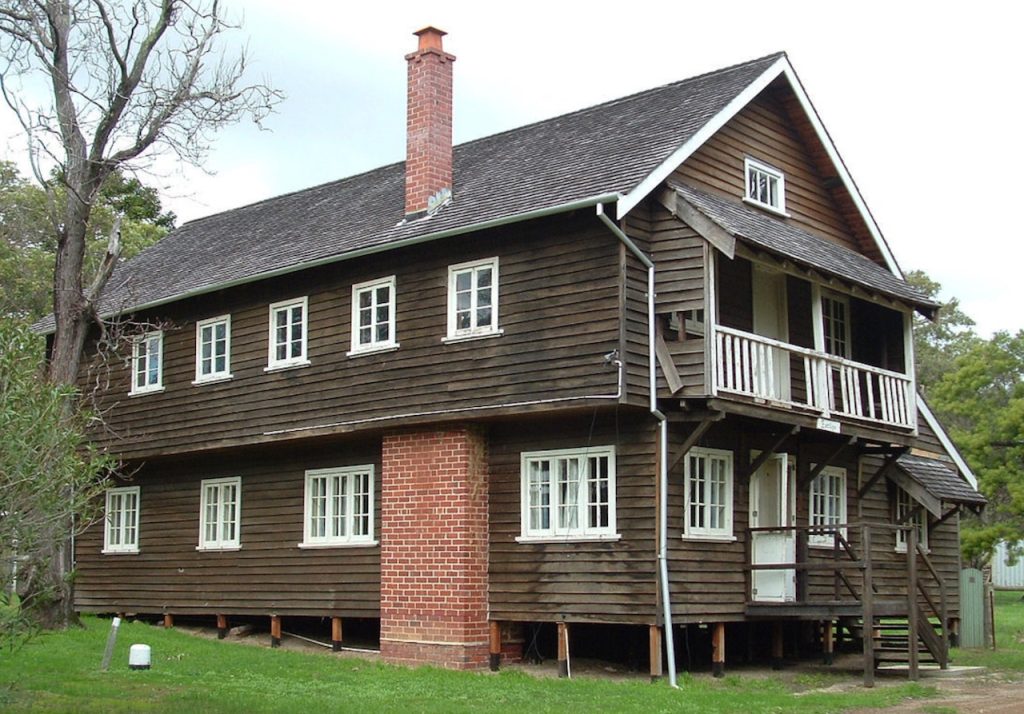
Above: Evelyn Cottage

Above: The Fairbridge Dairy
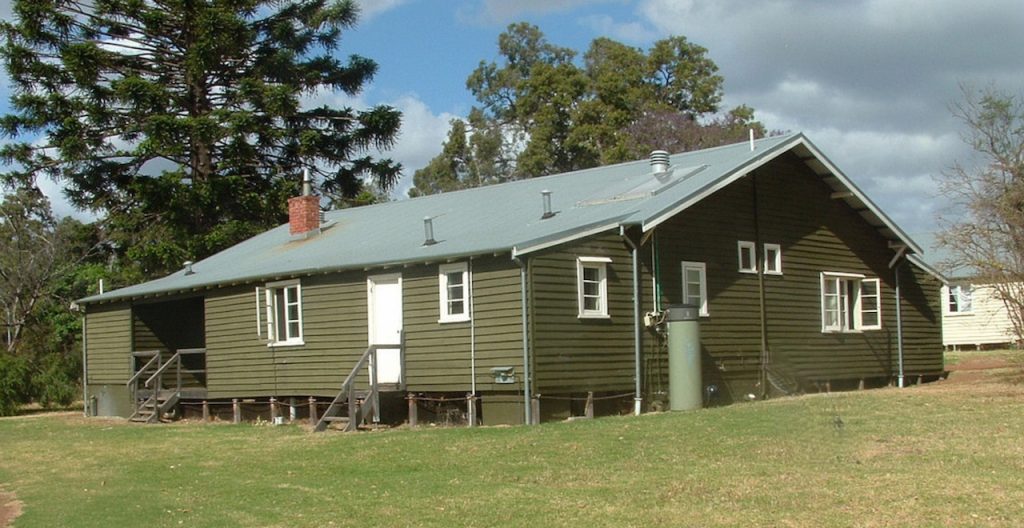
Above: Cook Cottage
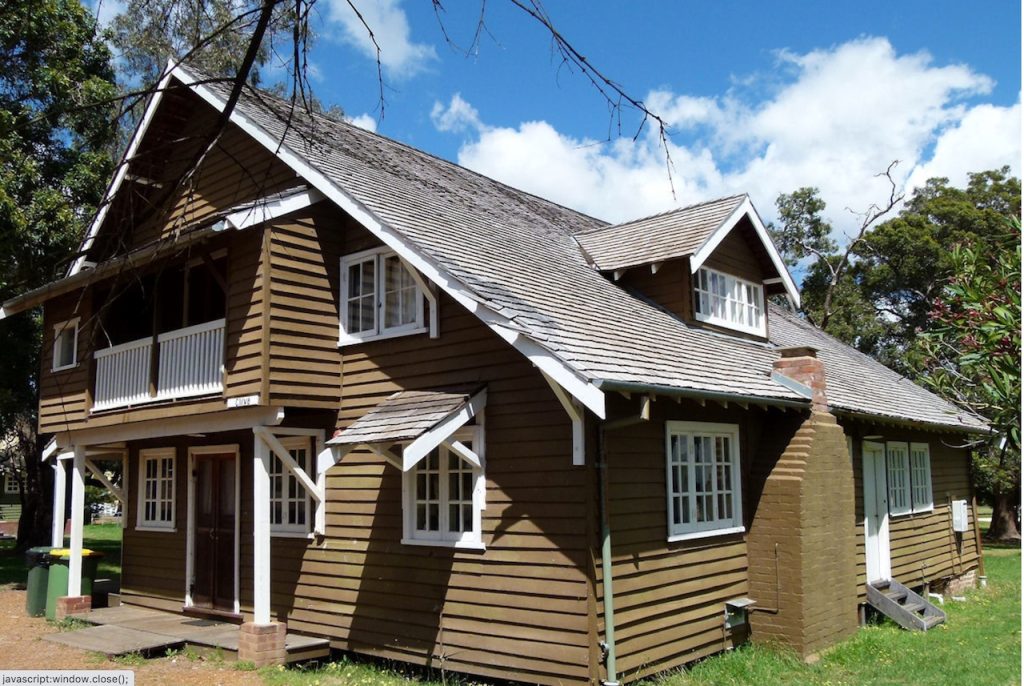
Above: Clive Cottage

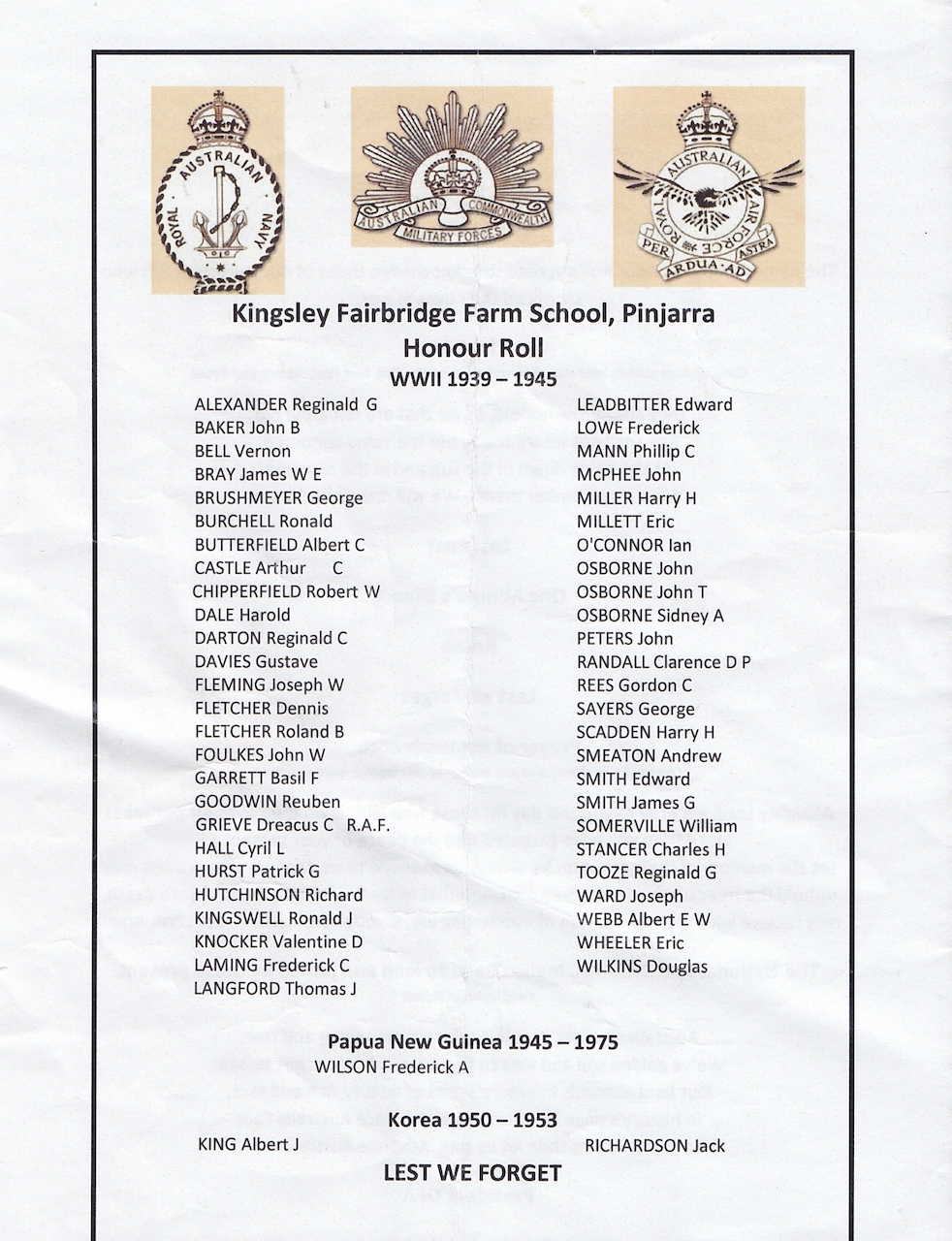
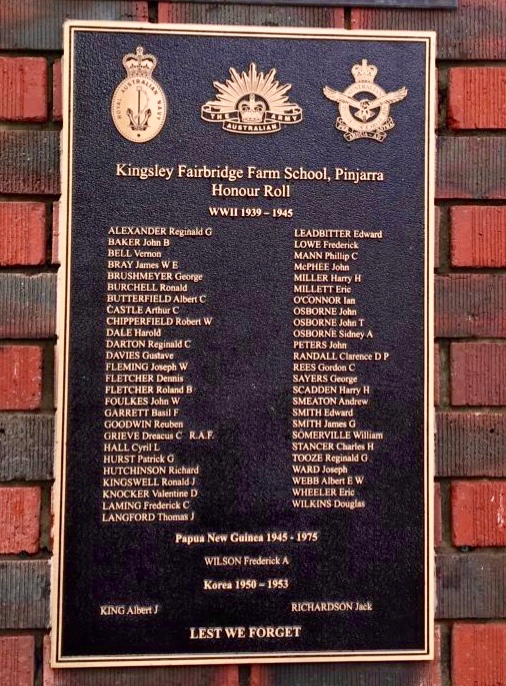
**** Please read below about Andrew Smeaton, 2/2nd Commandos,
THOSE WHO RETURNED
WX7600 BOUSFIELD George Reginald
Formerly from Barnardos he arrived in Western Australia on ‘Euripides‘ on 11 February 1924 at Albany. George aged 10 years, was housed in Glasgow Cottage.
B. 8 Aug 1914 Liverpool, England. He enlisted AIF 6 Aug 1940, later joining ‘D’ Coy.
Bousfied was one of about 90 machine gunners AWOL when ‘Aquitania’ sailed from Fremantle 16 Jan 1942 (as was Kingswell) Sent to Burma from Java, Bousfield worked on Burma-Thai railway with Williams Force and No. 1 Mobile Force. Recovered from Nakom Nayok Camp, Thailand.
WX7616 KNOTT Claude
Born 17 Jul 1917 Hereford, England to Fred and Mabel Knott. He arrived Western Australia from London on the ‘Beltana’ on 3/10/1928 in a group of 52 children. Claude was 11 years old. He was placed in Henry Hudson House.
Claude enlisted AIF 10th
Aug 1940 and later joined 2/4th’s
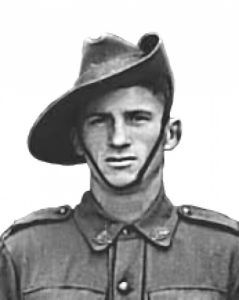 ‘A’ Coy as a Driver. Selected in Singapore with ‘A’ Force Green Force, No. 3 Battalion for Burma to work on Burma-Thai Railway. Selected from Non Pladuk Camp, Thailand to work in Japan. Left with ‘Awa Maru’ Party and worked at Fukuoka sub-Camp No. 17, Omuta. Was recovered from here at end of war. * (Harry Scadden enlisted same day). Harry Lucas also with Green Force and same camp Japan.
‘A’ Coy as a Driver. Selected in Singapore with ‘A’ Force Green Force, No. 3 Battalion for Burma to work on Burma-Thai Railway. Selected from Non Pladuk Camp, Thailand to work in Japan. Left with ‘Awa Maru’ Party and worked at Fukuoka sub-Camp No. 17, Omuta. Was recovered from here at end of war. * (Harry Scadden enlisted same day). Harry Lucas also with Green Force and same camp Japan.
Knott was working in 1935 & 1936 for J. Renfree & Sons, Boyanup. He visited and stayed at Fairbridge during March and April 1936. According to social notes recorded in the magazine “The Fairbridgian” Claude was an entertainer! Walking upside down on his hands.
In 1938 Claude married Ellen Bertha Harris. They had four children. Claude and Ellen lived in Ray St, Boyanup.
It is probable Knott and Scadden who was also at Boyanup, were in touch with each other prior to enlisting.
Claude Knott, Don Ross and Harry Bunker were in No. 6 Platoon, ‘A’ Company.
Former Fairbridge Kids in No. 6 Platoon included Knott and Maude; Reinforcements included Harry Lucas and Reg Pascall.
Don Ross WX9253 died Sandakan. He was married to Harry Bunker’s sister Ada.
Knott, Ross, Bunker enlisted 30 Oct 1940 into ‘A’ Coy. Charles Harris enlisted 13 Aug 1940 and Harry Delaporte enlisted 10 Aug 1940 in to ‘A’ Coy.
Delaporte was on Rakuyo Maru as was Harry Bunker. Only Bunker survived. Ross perished Sandakan 23 May 1945 and Harris died 27 May 1945.
WX13752 LUCAS Harry
b. 11 Oct 1919 to Frank & Alice Lucas at Windsor, England.
He was one of two sons.
Harry arrived in Australia on 20th March 1928 on ‘Benalla’ aged 8 years. His mother died in 1922 when Harry was 3 years old.
He attended Fairbridge school for 6 years before being assigned to work.
In 1935 Harry was working at Calingiri in 1936 and working for J. Thomson Esq, Yericoin. The magazine “The Fairbridgian” wrote Harry stayed at Fairbridge for a visit in January and February 1936. Other 2/4th boys staying about same time included Ted Leadbitter, Syd Osborne, and Rueben Goodwin – all three lost their lives.
Harry recorded his brother Frank as his NOK. Frank was living in Windsor, England.
He enlisted AIF 28 May 1941and later joined 2/4th’s ‘A’ Coy. as a Driver/mechanic. Selected in Singapore with ‘A’ Force Burma Green Force, No. 3 Battalion to work on the Burma-Thai Railway. From Tamarkan Camp Thailand, he was deemed fit and selected to go to Japan to work with ‘Awa Maru’ Party and worked at Fukuoka sub-Camp No. 17 Omuta, from where he was recovered at the end of the war. Claude Knott also in Green Force and Japan.
WX17000 MATTHEWS Frederick Noel (Cowboy)
b. 23 Dec 1923 Liverpool, England to Elizabeth Matthews.
He arrived in Australia 14/5/1931 on ‘Largs Bay’ aged 8 years. Also on board was Reginald Gerald Tooze WX16323. They were housed in ‘Nelson’ Cottage.
Cowboy was with ‘E’ Coy during the fight to save Singapore, he was one of the few survivors of Fairbridge boys in E Coy.
Enlisted 23 Oct 1941 (underage) Reinforcement with ‘E’ Coy, Special Reserve Battalion. Sent to work Burma-Thai Railway at Hellfire Pass Cutting with ‘D’ Force Thailand ‘S’ Battalion. In 1944 selected by Japanese as fit to work in Japan. Sailed Rashin Maru (70 day journey on ‘junk’ ship) to Moji, Japan then travelled to Yamane and Nihama – Mitsui copper mines till end of war.
WX13285 MAUDE Jack
Jack’s father was a doctor who was killed serving with the French Army during WW1. Jack had been sent out to Australia from Swanley Boys Orphanage in Kent.
He arrived Australia 9/3/1921 on “Omar” having just turned 10 years old. His group was the first to be sent from England after WWI and consisted of just 15 boys and girls. Later groups were much larger.
Jack maintained a life friendship with several other Fairbridge Kids including twins Dorothy and Florence Webb who also sailed with the “Omar” group.
His working contract from Fairbridge took him to Carnarvon 1921-1926, then 1929-30 he was located at Boyanup, Dardanup and Mt Barker. Between the years 1931-1935 Jack was back working in the Carnarvon area and in 1941-42 was recorded in the City Directory as residing in Palmyra.
With Fairbridge mates Ken Waters and Steve Brown, Jack regularly visited and maintained the friendship of Dorothy Webb and Henry Hawkesford, the first couple to marry at the new Fairbridge Church. The Hawkesford’s farmed at Cowamwerup. Phoebe Pinker (nee Hawkesford) daughter of Dorothy & Henry remembers ‘Uncle Jack’ being quietly spoken and a caring man.
Jack was sent to work on Burma-Thai railway from Java, where he landed rather than Singapore because he was one 90 odd 2/4th men who went AWOL from Aquitania (the 3rd Fairbridge Boy) when it anchored for one night at Gauge Roads off Fremantle on its journey to Singapore 15 January 1942.
From Java he was selected from Bicycle Camp Batavia with ‘A’ Force Burma, Java Party No. 4 Williams Force. Was later selected from Kanchanaburi, Thailand to work in Japan. Left with ‘Awa Maru’ Party with Harry Lucas and Claude Knott however separated at Moji and worked at Fukuoka sub-Camp No. 24 Sendyu. Was recovered from here at end of War.
Jack Maude suffered all his life with the effects of radiation from atomic bomb.
WX12336 PASCALL Reginald
Born 5 Nov 1920 Kent, England to Elizabeth Pascall.
Reg arrived in Australia with Party No. 25 on SS ‘Ballarat’ on 23/11/1931 aged 11 years. He was housed in ‘Kitchener’.
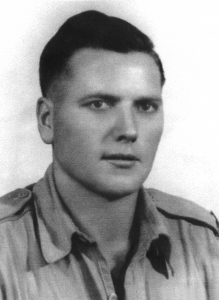
In 1936 Reg was working at Brick House Station, Carnarvon. He enlisted 2 May 1941, Taken on Strength to SA joined ‘A’ Coy as a rein reinforcement,
At Singapore Reg went with ‘D’ Force Thailand S Battalion to work on Burma-Thai Railway. Deemed fit by the Japanese in 1944, he was selected to work in Japan with ‘Rashin’ Maru Party. He worked at Yamane and Niihama & recovered from Japan at the end of the war.
Others with ‘D’ Force S Battalion: Westlake, Pascall, Matthews, King. The last three were also with ‘Rashin Maru’ Party to Japan.
Returning from war, Reg married 1948 in Victoria to Lorna Francis Barry.
Lorna died 10 June 1997. Reg died 20 June 2006 aged 85 years. Both are buried Portarlington Cemetery, Portarlington, Greater Geelong, Victoria, Australia
‘
WX17393 PILMOOR Thomas
Born 4 Jul 1917 Gloucestershire, England to Robert and Sarah Pilmoor.
Tom arrived in Australia from England with older brother Robert on 3/10/1928. Tom was 11 years old and Robert 13 years. Tom was housed in Livingstone. He was a student at Fairbridge for 5 years before being sent to work.
From 1933 to 1936 Tom was working for W. Green Esq., Mt Barker.
He enlisted AIF 27 Oct 1941 and as a reinforcement joined Battalion HQ as temporary Batman/Runner.
Selected from Singapore to work Burma, with ‘A’ Force Green Force No. 3 Battalion. He was recovered from Bangkok, Thailand at the the end of war. Tom had been selected to work in Japan, however missed the draft due to illness.
Lucas and Knott were also with ‘A’ Force, Green Force No. 3 Battalion in Burma.
WX14836 RAMSBOTTOM Jack Kenneth (later known as John LANE).
Born 18 Nov 1922 Ramsgate, Kent, England.
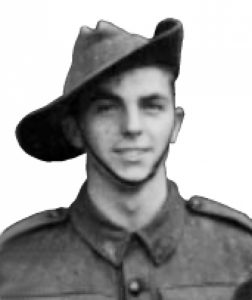 John arrived in 1933 was housed at Rhodes and left to go to work in 1938. John wrote the story of his life ‘Fairbridge Kid’ and later a book about Japan.
John arrived in 1933 was housed at Rhodes and left to go to work in 1938. John wrote the story of his life ‘Fairbridge Kid’ and later a book about Japan.
John was a noted athlete at Fairbridge along with Harry Scaddan.
He enlisted 4 July 1941 and joined ‘A’ Coy as a reinforcement.
Selected from Singapore with ‘J’ Force Wales Maru’ Party to work in Japan at Kobe. He in fact spent most of his POW days in Japan. From Kobe he worked at Kawasaki Camp, Maruyama Park Wakinohama from where he was recovered at the end of the war. (After the war changed his name to Jack Kenneth Lane.)
John Lane gave much back to Fairbridge. He is responsible for the construction of the cottage on the Fairbridge grounds which shows how life was for the children. John also organised bus tours of Fairbridge Farm School – driving a bus and providing history to passengers.
John gave much back and was proud of his Fairbridge heritage
WX16324 TANNER George Douglas (Doug)
born 12 Jan 1922 London, England.
He was one of 22 boys and girls who arrived in Australia on ‘Ballarat’ 15/5/1934. Doug was 12 years old. He was accommodated at ‘Newton’ House. He has two older sisters and was 4 years old when his mother, Alice Beatrice Tanner (nee Legg) born 1879 died in 1926 at the age of 47 years. His father George Thomas Tanner was born 1880 and died in 1940.
Doug and Fairbridge Kid Reg Tooze WX16323 were together when they enlisted. Reg Tooze was KIA 11 February 1942 aged 21 years.
He enlisted AIF 3 Sep 1941and joined HQ Coy as a reinforcement. He was selected in Singapore with ‘D’ Force V Battalion to work Burma-Thai Railway. It appears Doug spent a great deal of time at Brankassi Camp before being moved to Non Pladuk. It was here he was deemed fit for Japan and selected with Aramis Party to work at Fukuoka sub-Camp No. 17 Omuta.
Claude Knott and Harry Lucas were at same camp at Omuta, although they sailed with ‘Awa Maru’ Party. Doug was recovered from Omuta, Japan at end of the war.
Please read further about ‘D’ Force V Battalion
WX9570 WESTLAKE Percival Leonard
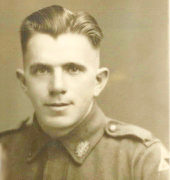
Born 28 Jan 1917 Aldershot, England to George & Marie Westlake.
‘With D’ Coy he received shrapnel wounds to his right knee and abdomen 8 Feb 1942.
Selected from Singapore with ‘D’ Force Thailand S Battalion to work on Burma-Thai Railway. Percy was recovered from Nacompaton Camp, Thailand at end of the war.
Chipperfield and Ramsbottom were in ‘A’ Company No 5 Platoon. When Ramsbottom was very sick, Chipperfield endangered himself to get food supplies for him.
Claude Knott and Jack Maude were also in ‘A’ Company, however in No. 6 Platoon. They were joined by reinforcements Harry Lucas and Reg Pascall.
The four young men who died February 1942 were part of ‘E’ Coy, Matthews was the only Old Fairbridgian in Reinforcements in ‘E’ Coy to survive Fall of Singapore.
There were two Old Fairbridgians who were Taken on Strength Woodside Camp, South Australia 5 October 1941. King (KIA Korea) and Tanner.
After the war, those who were not married and without family returned to Fairbridge to stay. The below photos (from Cowboy Matthews Collection) show many ‘recreational’ aspects of these men living life after the Forces and after surviving life as a POW!
For them it was back to Fairbridge, the only home they had known!
if you can identify the young men in any of following photographs, please email; 2nd4th@gmail.com
Below: taken summer of 1945-1946 at Fairbridge Holiday Camp at Mandurah.

Sitting far Left Cowboy Matthews.
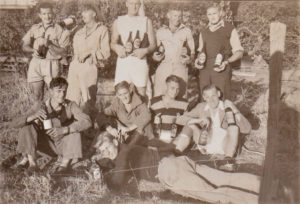
‘Cowboy’ Matthews standing centre back in white.
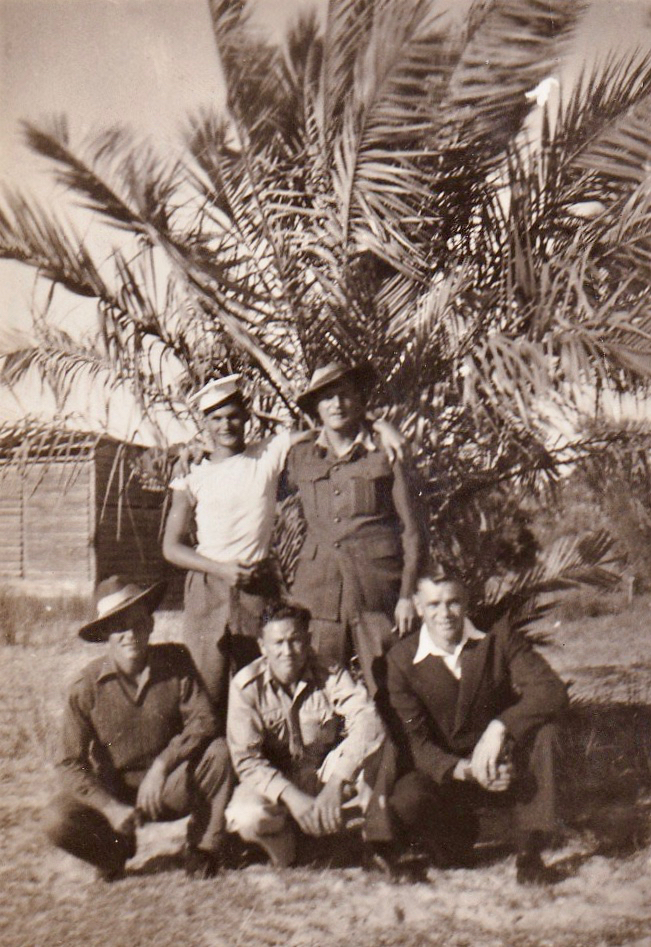
Believed to be taken after the war. ‘Cowboy’ Matthews standing on right.

Standing in front of Old Fairbridgians Hall. Matthews standing on left.
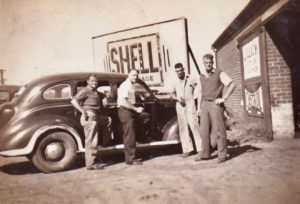
Returned Soldiers were entitled to generous (?) fuel rations – this group decided to go touring. Matthews standing far right. Far Left: possibly Doug Tanner
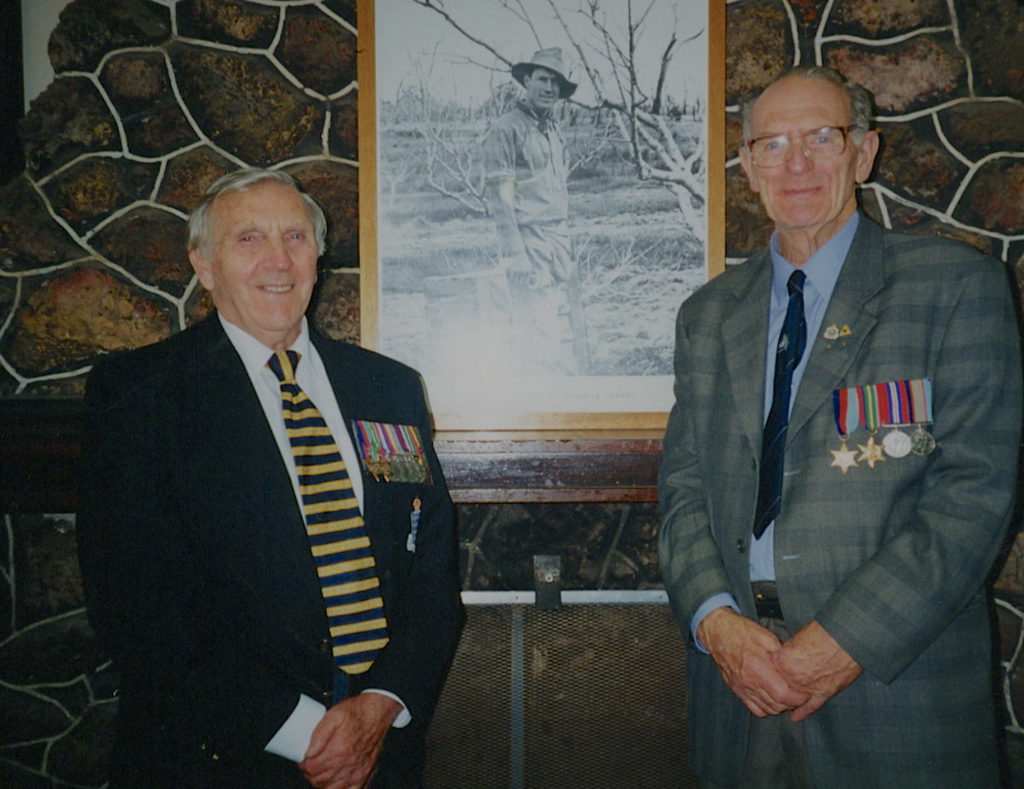
John Lane is wearing Fairbridge Farm School Tie.
Pease read John Lane’s obituary
The following was printed in Borehole Bulletin newsletter December 2000.

Below: 2/4th day at Fairbridge 2001. 2/4th were held events annually.

Front Row L-R: Greg Burdon, Ron Badock, Des Colevas, Jim Gilmour, Joe Pearce
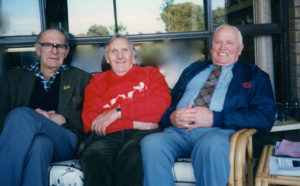
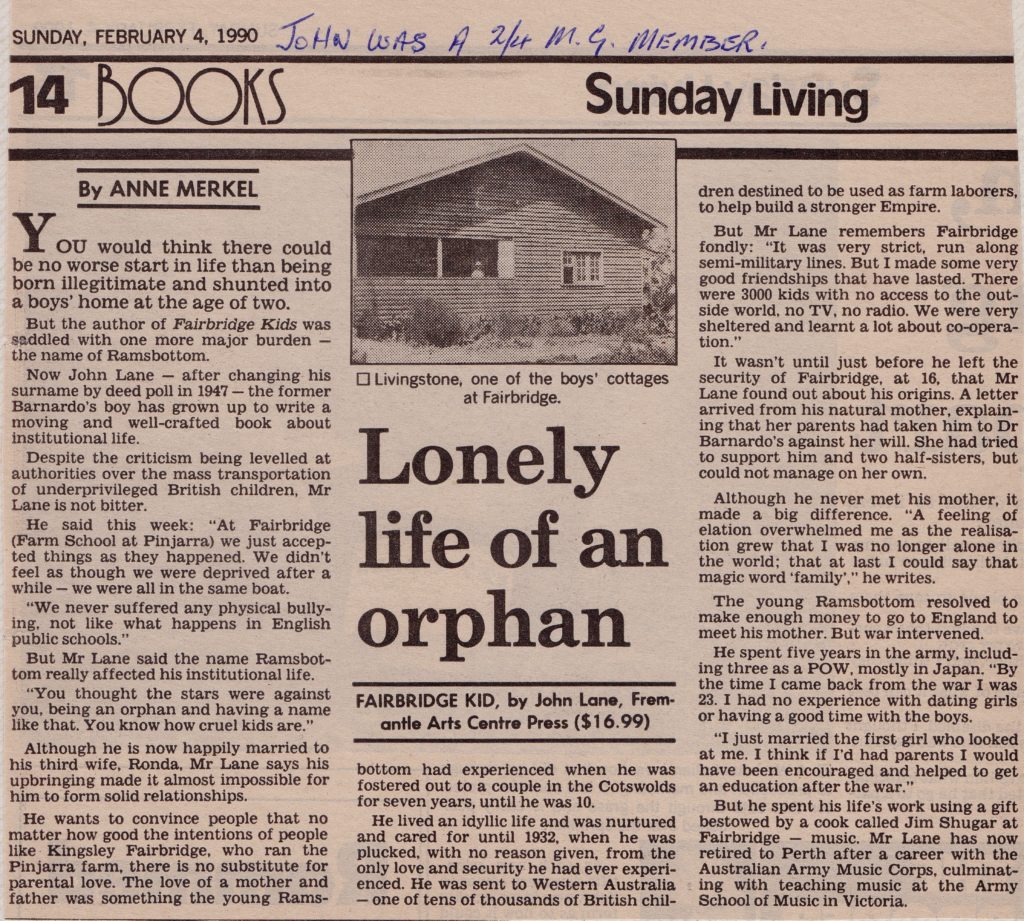
Above: From Beattie Collection.
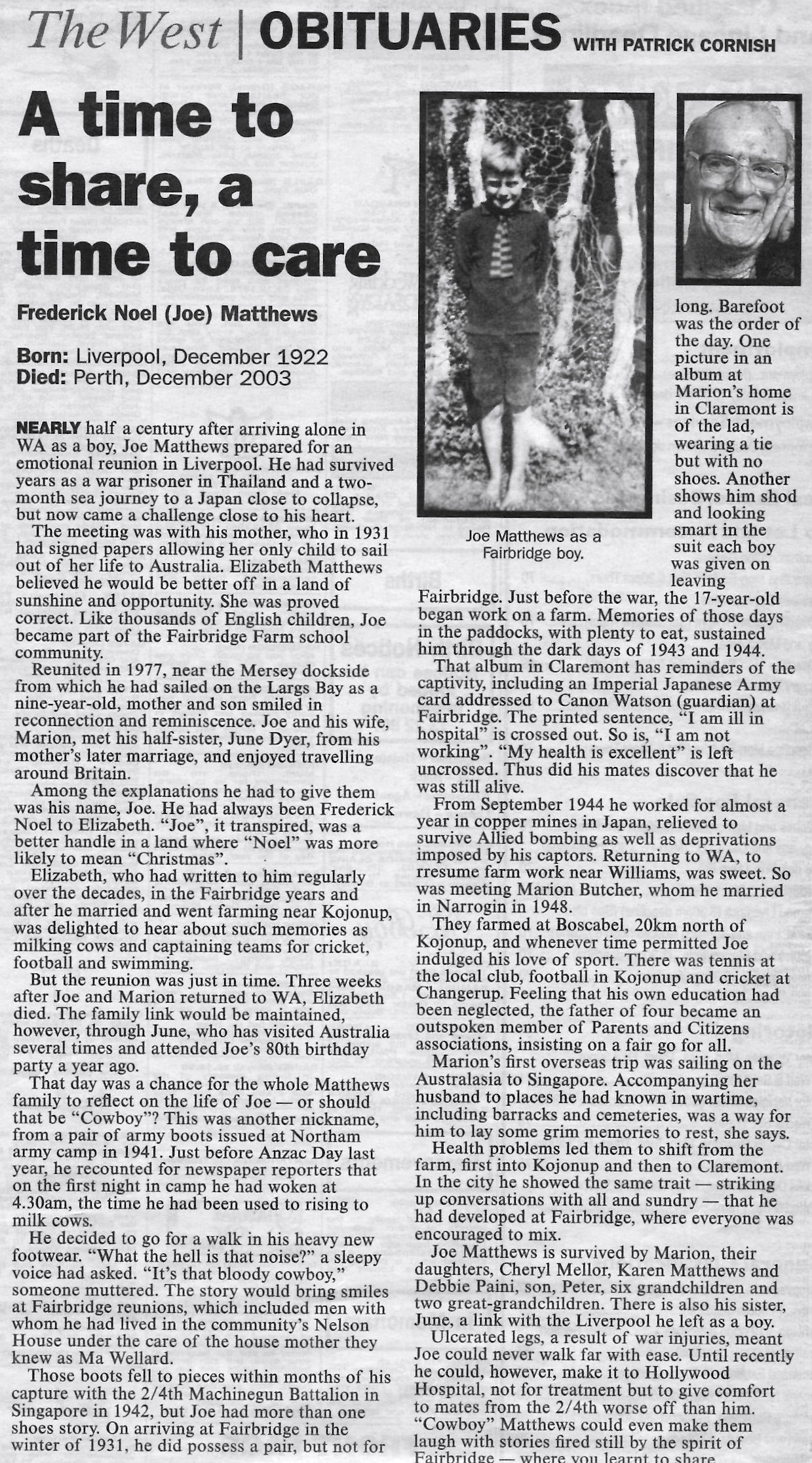
Below: 1928 Fairbridge Hospital is constructed.
Below: Lt. Col Heath arrived 1928 as the new Fairbridge Principal
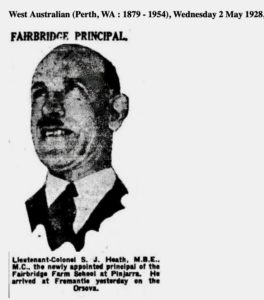
Below: ‘Ballarat’ arrives 1929 with boys and girls from England. Amongst them is Bill Crawford who became a close mate of ‘Cowboy’ Matthews. Standing next to each other at Northam, Matthews was sent to 2/4th and Crawford I believe to 2/28th. They each managed to survive the war.
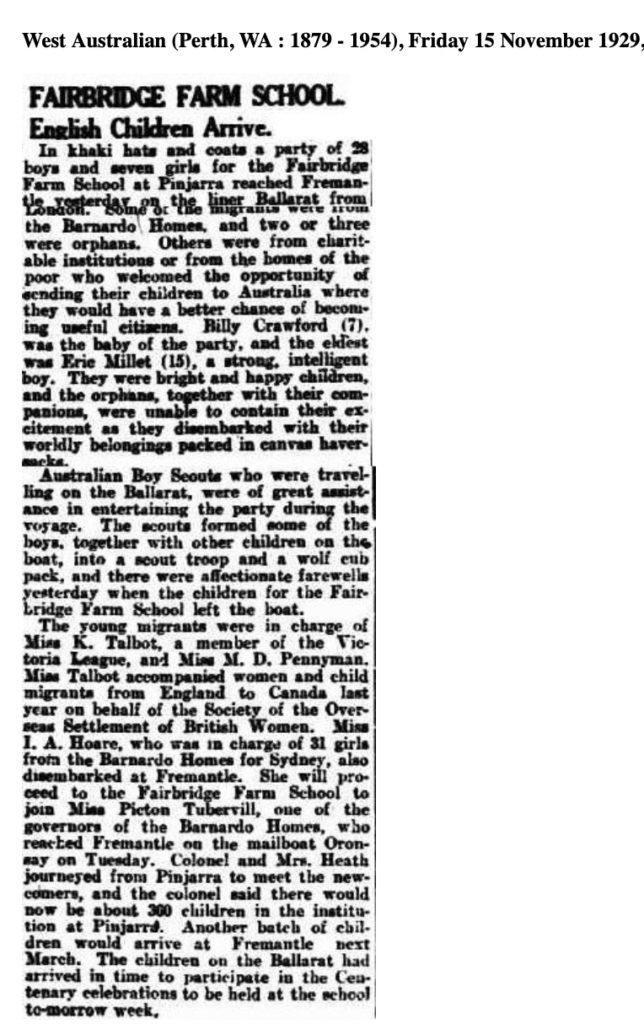
Below: 1938
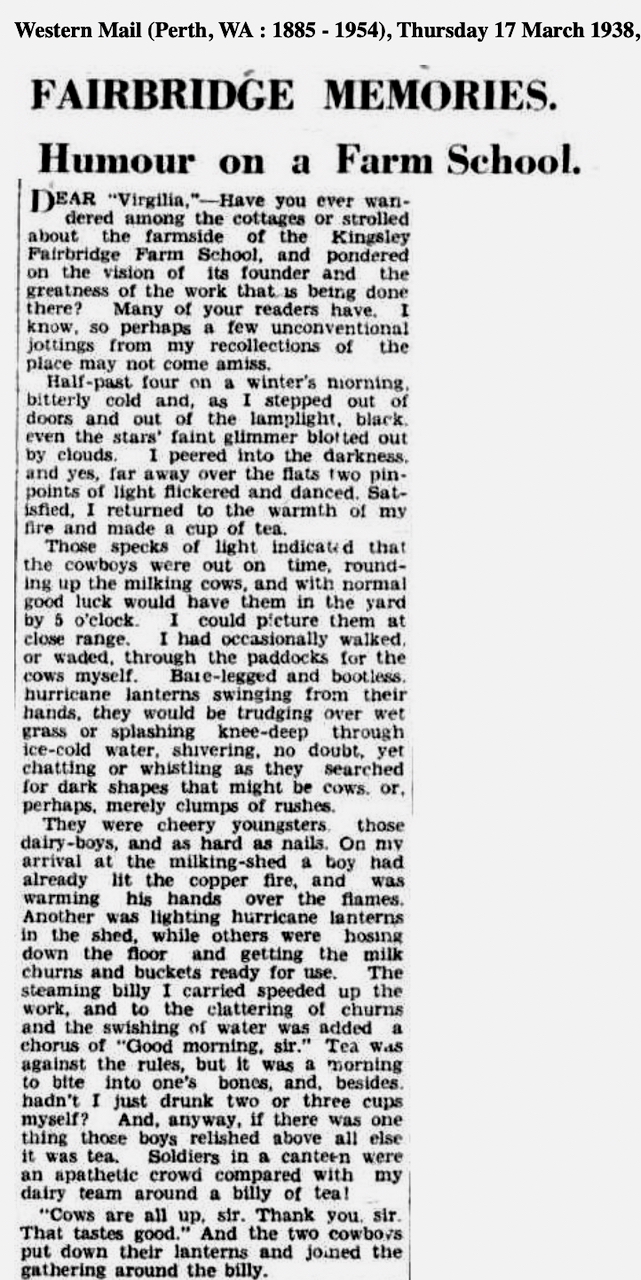
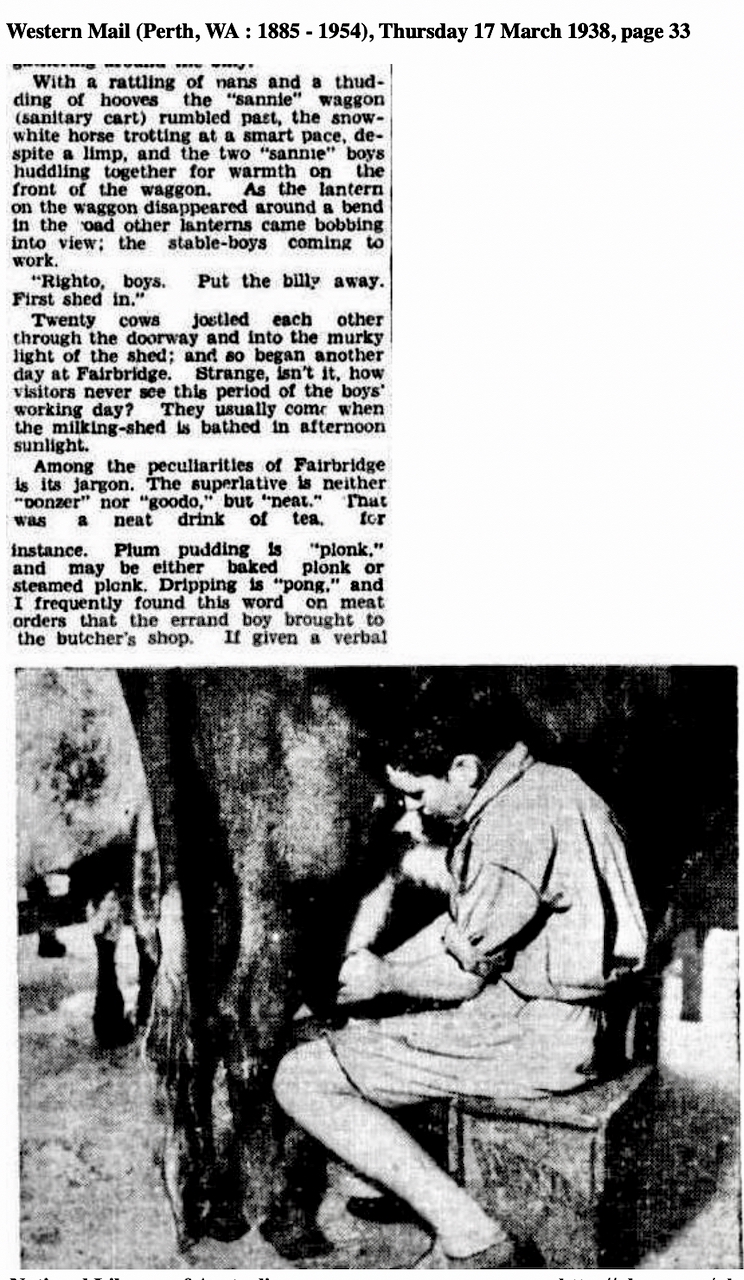
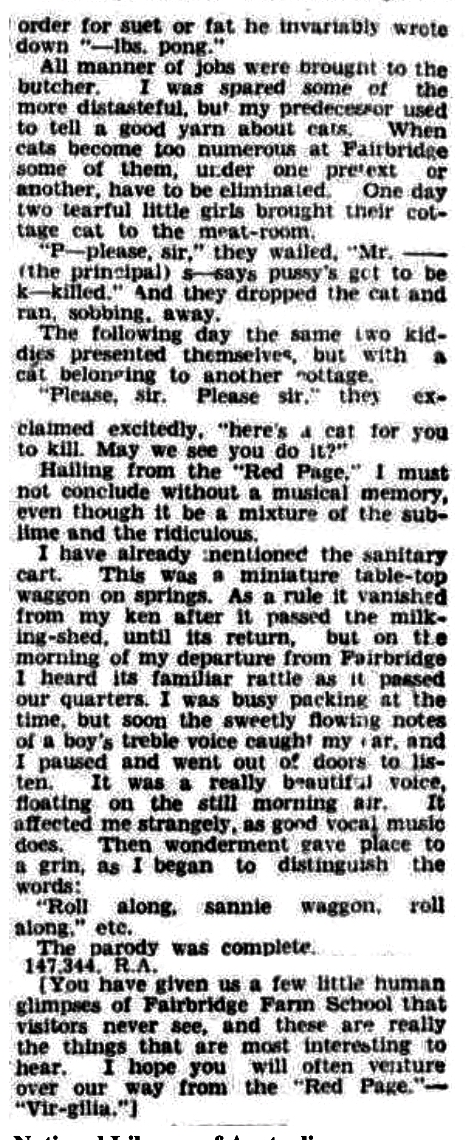
AFTER THE WAR
– Fairbridge Farm School was run quite differently. In fact the WA Government wanted to close the school because it did not meet health and safety standards. However this was overlooked because of ‘Royal’ connections in England.
There are many stories of children whose lives were extremely traumatised and abused during the 1950’s onwards at Pinjarra and far worse at Moolong.
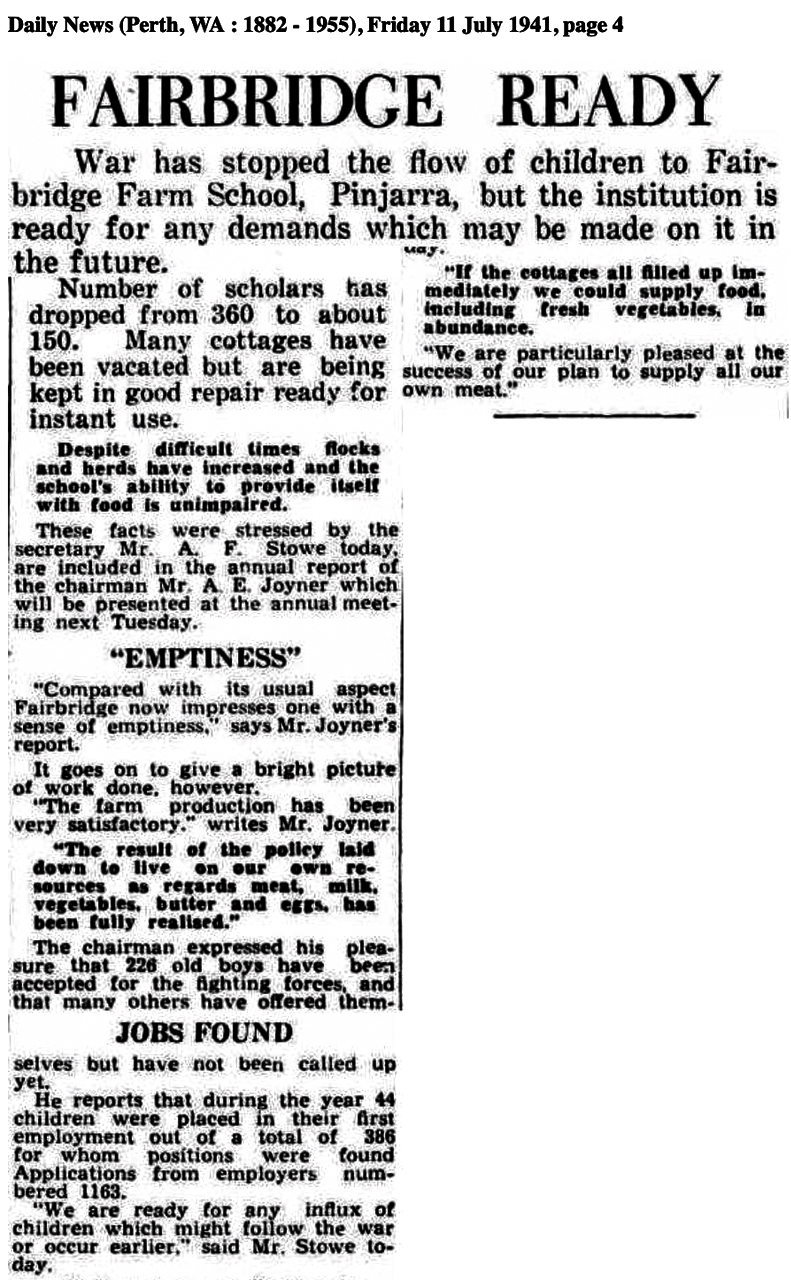
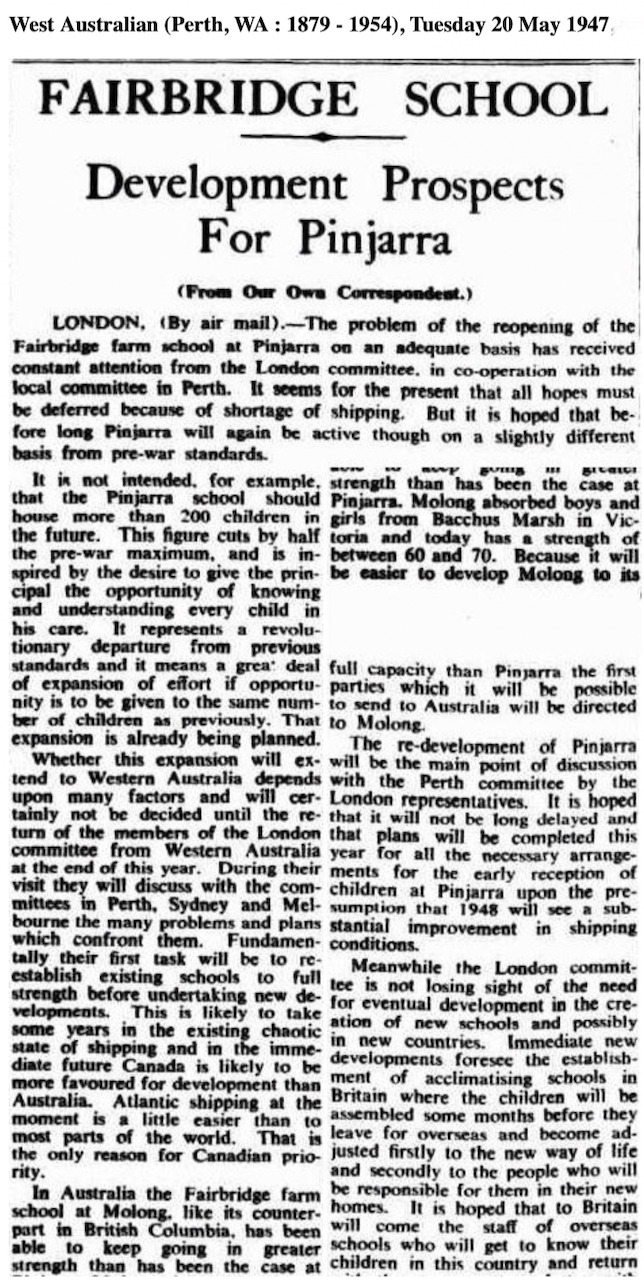
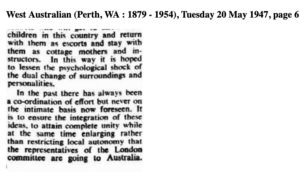
**** WX5537 Andrew Smeaton was born Stirling, Scotland 1918, enlisted AIF Claremont 11 Dec 1940 at the age of 22 years. Andrew had no NOK to record and had been working as a farmhand at Wagin. He later joined 2/2nd Commandos.
He was an original member of the unit, embarking aboard “S.S. ZEALANDIA” on 8 Dec 1941 for Timor as a Private in No 8 Section, “C” Platoon.
No 8 Section were operating an observation post (OP) near Mindelo, overlooking Maubisse, reporting on Japanese movements. Before dawn on the 11 Nov 1942, Andrew and Private George Thomas, went to man the OP and they were never heard of again. It was surmised that they were ambushed by the Japanese when they arrived and must have put up a terrific fight, as a patrol who went there later, although not finding any bodies, saw a big heap of expended ammunition shells, as indication that these two men had sold out dearly.
Some parts of the above information is from https://doublereds.org.au/history/men

